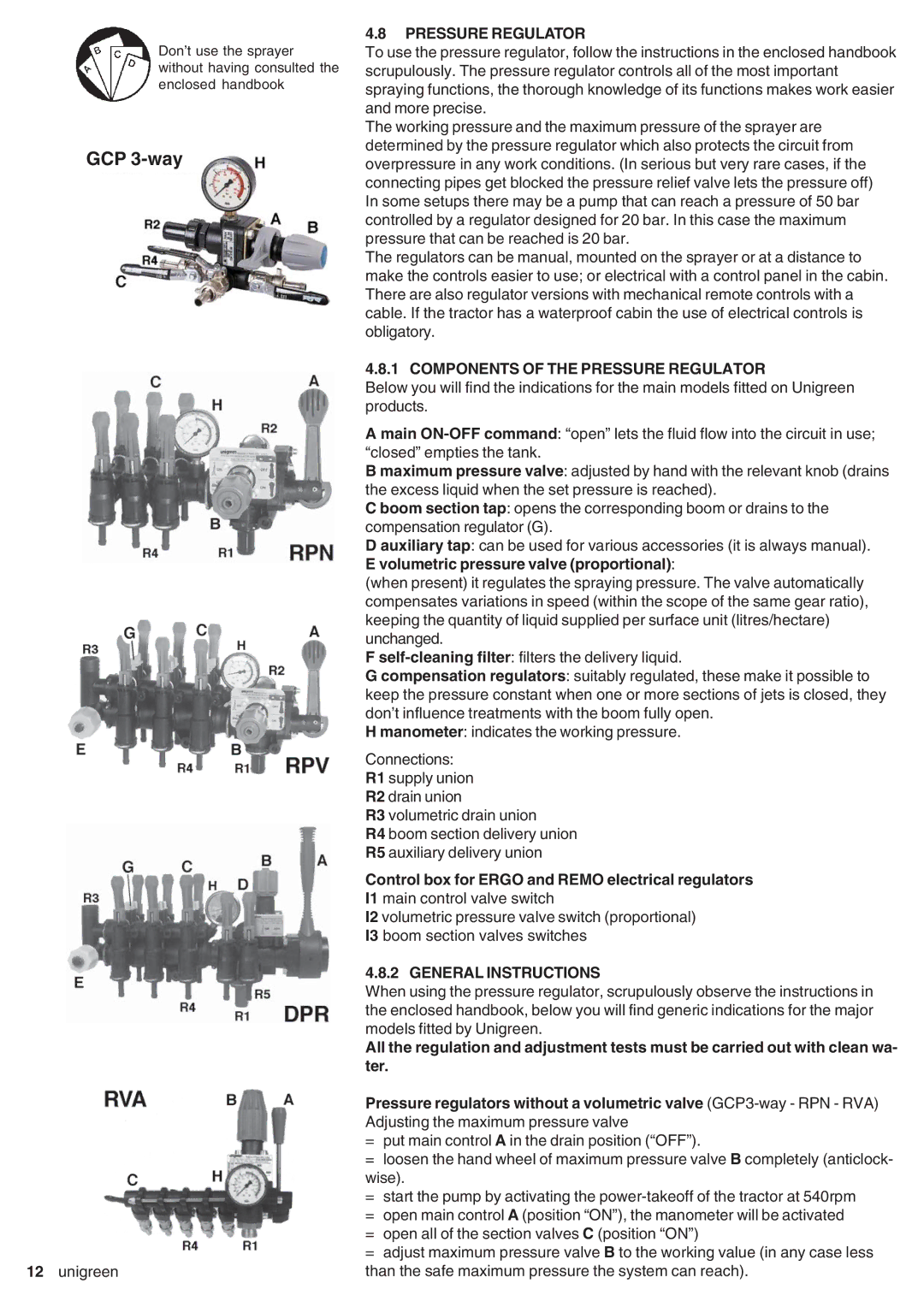CAMPO 11 - 16 - 22 - 32, DSP 11 - 16 - 22 - 32 specifications
Unigreen DSP Series and CAMPO Series are advanced agricultural sprayers designed to meet the evolving needs of modern farming. The Unigreen DSP (Dynamic Spraying Product) models 11, 16, 22, and 32, along with the CAMPO models of the same specifications, are engineered for efficiency, precision, and reliability in crop protection.One of the key features of the Unigreen DSP models is their innovative spraying technology. Each model is equipped with a high-capacity tank that allows for extended operation without the need for frequent refills. The DSP series incorporates adjustable booms that provide precise application across various crop types. This ensures uniform coverage and minimizes waste, making it an environmentally friendly option for farmers.
The CAMPO series also boasts similar tank capacities and boom adjustments, making them suitable for diverse agricultural applications. Both series offer customizable options, allowing farmers to choose the configuration that best fits their land and crop requirements.
Another standout characteristic of both Unigreen and CAMPO sprayers is their user-friendly interface. Equipped with advanced electronic controls, farmers can easily monitor and adjust spray rates, pressure, and other critical parameters in real time. This technology not only enhances the sprayers' operational efficiency but also aids in achieving the optimum application rates for different pesticides and fertilizers.
Furthermore, both series integrate cutting-edge GPS technology, enabling precision agriculture practices. This feature allows operators to map their fields, ensuring that every inch is accurately treated, while also reducing the possibility of overlap or missed areas. This precision application reduces chemical usage and ultimately leads to cost savings.
Durability is another primary focus in the design of the Unigreen DSP and CAMPO sprayers. Built with high-quality materials that can withstand harsh environmental conditions, these sprayers promise longevity and consistent performance over time.
In summary, Unigreen DSP and CAMPO models 11, 16, 22, and 32 are technologically advanced agricultural sprayers that combine efficiency, precision, and durability. With features such as adjustable booms, advanced electronic controls, and GPS technology, they cater to the diverse needs of today’s farmers, helping to enhance productivity while minimizing environmental impact. These sprayers are positioned to play a pivotal role in the future of sustainable agriculture.

